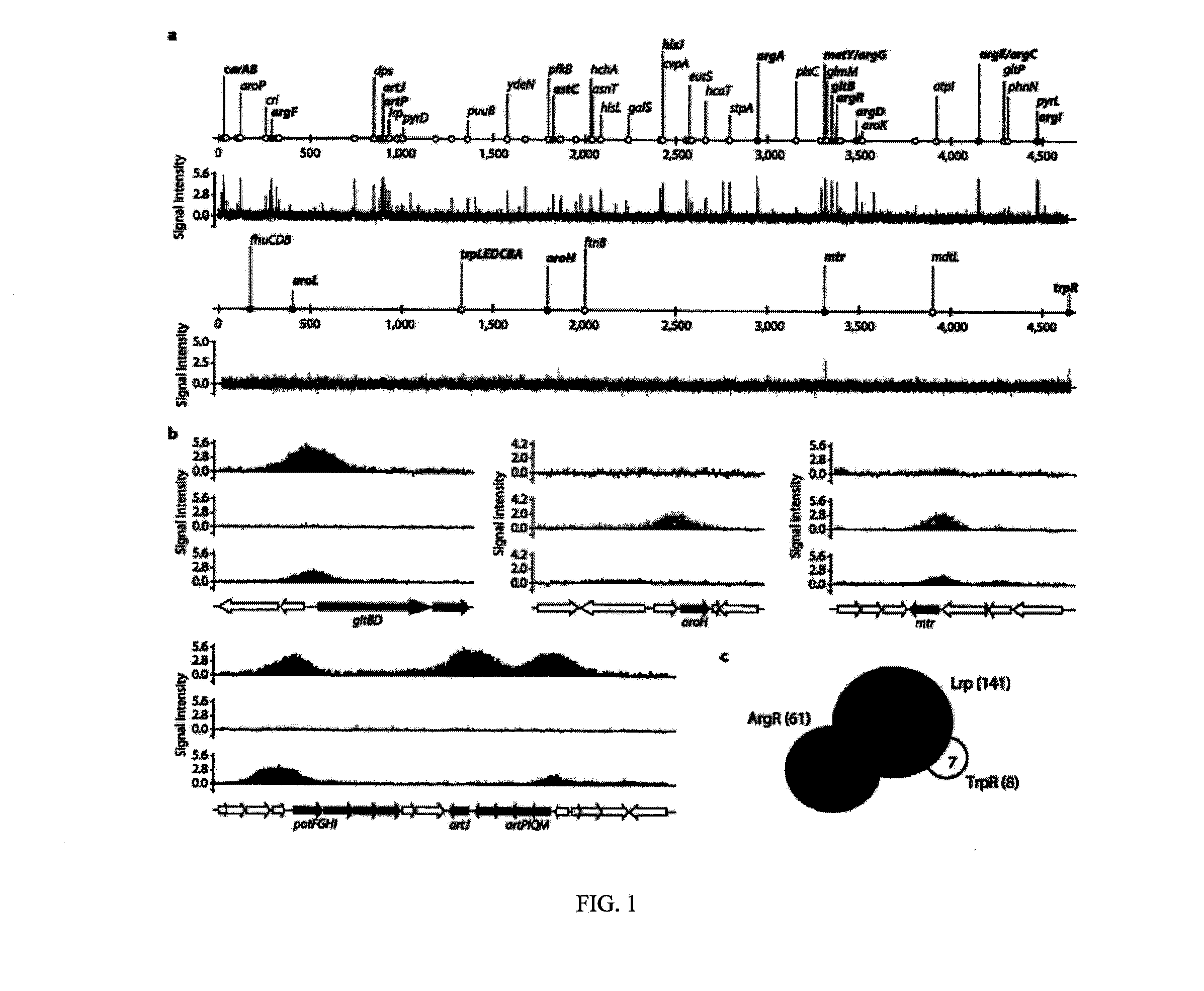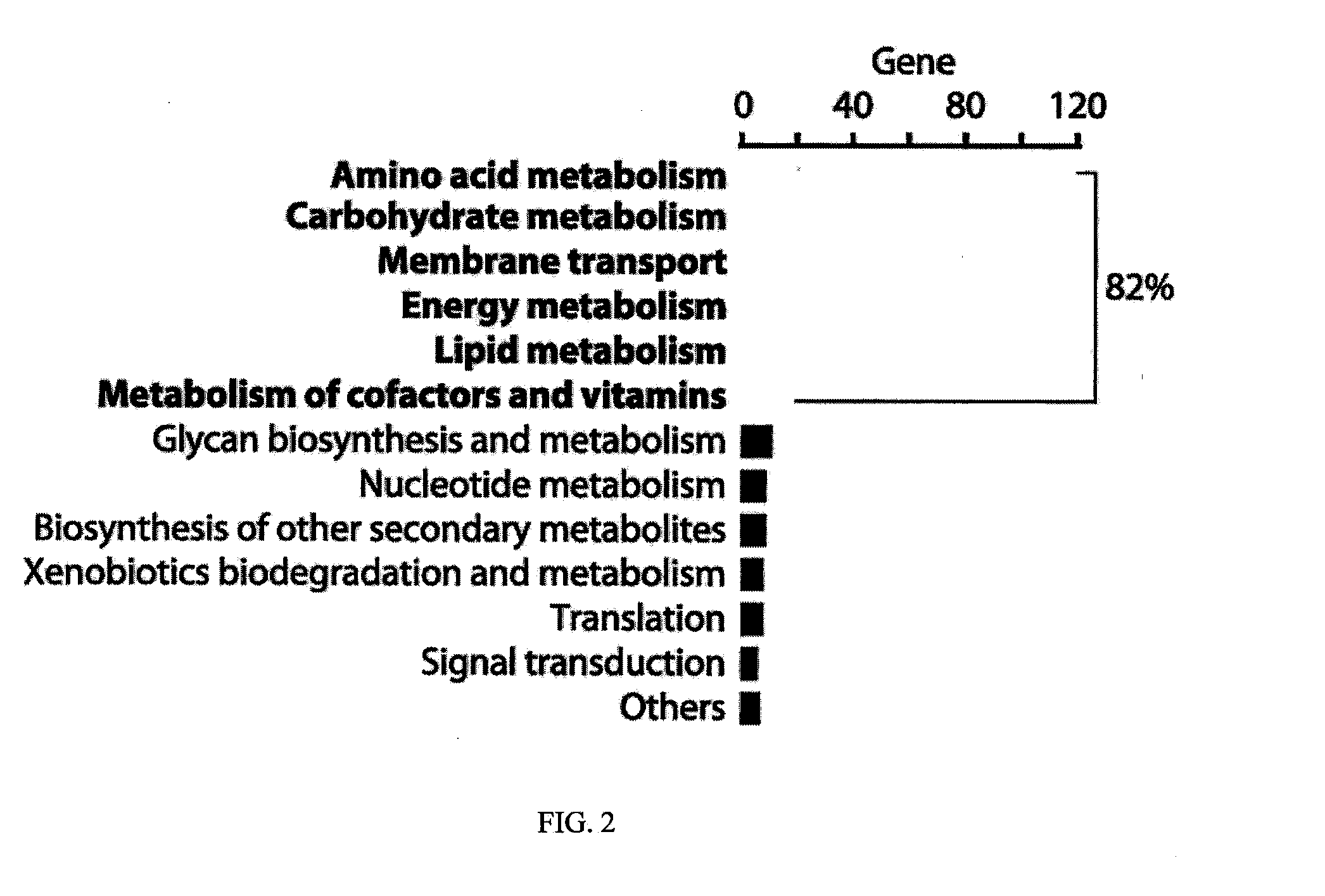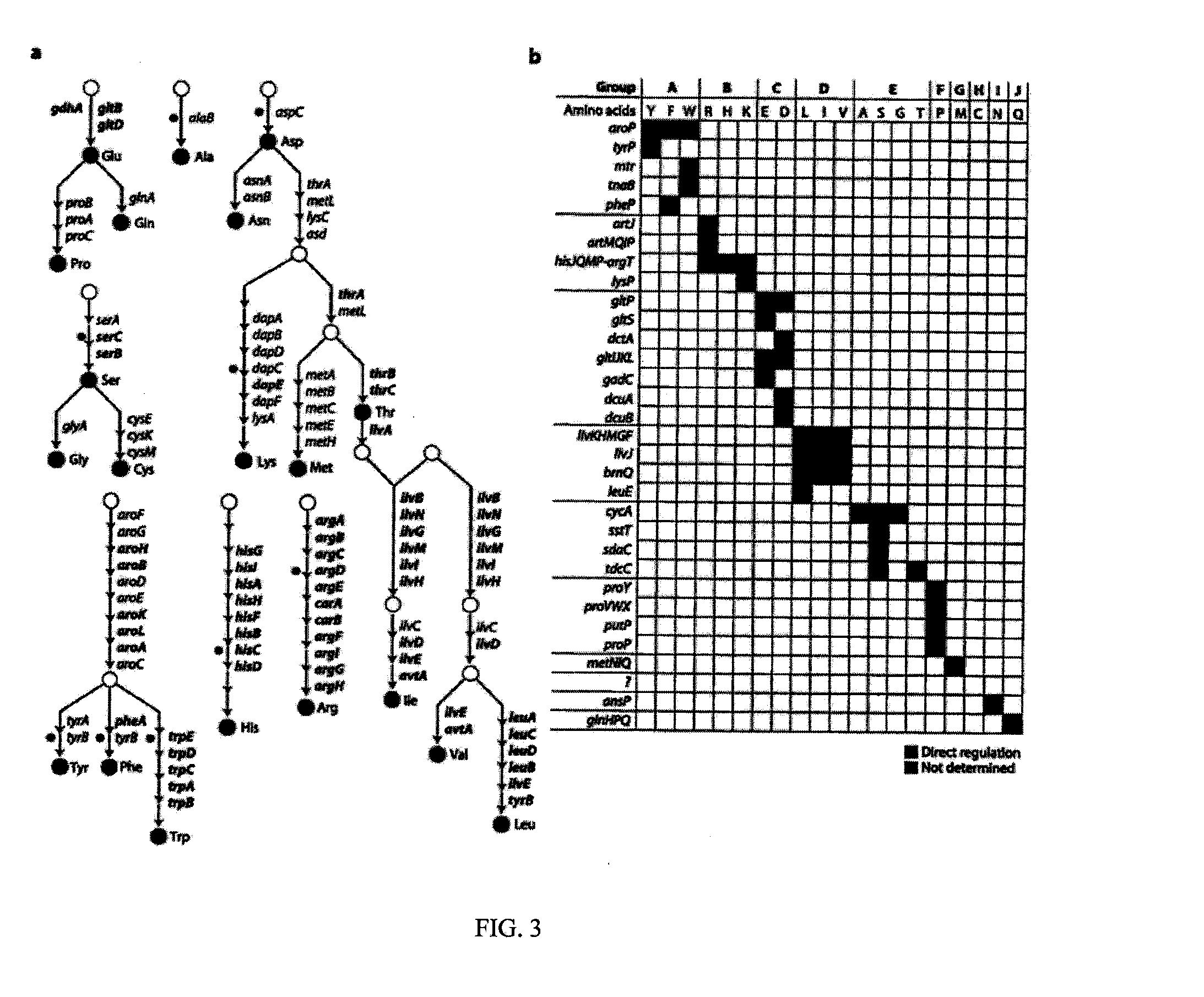Bacterial Metastructure and Methods of Use
a technology of amino acid metabolism and metastructure, applied in the field of amino acid metabolism regulatory mechanisms, can solve the problems of inability to appropriately understand complex regulatory phenomena existing across multiple tfs and regulatory signals, and difficulty in establishing the regulatory motif for amino acid metabolism, etc., and achieve the effect of modulating argr activity and modulating lrp activity
- Summary
- Abstract
- Description
- Claims
- Application Information
AI Technical Summary
Benefits of technology
Problems solved by technology
Method used
Image
Examples
example 1
Regulatory Motif Determination
[0073]This example demonstrates the detailed procedures used by describing how a specific situation is processed.
[0074]Bacterial strains and growth conditions. All strains used are E. coli K-12 MG1655 and its derivatives. The E. coli strains harboring ArgR-8myc, LRP-L-8myc, and TrpR-8myc were generated as described previously (Cho, B. K. et al. (2006) Biotechniques 40, 67-72). Glycerol stock of ArgR-8myc strains were inoculated into W2 minimal medium containing 2 g / L glucose and 2 g / L glutamine, and cultured overnight at 37° C. with constant agitation. The cultures were inoculated into 50 mL of the fresh W2 minimal media in either the presence or absence of 1 g / L arginine and continued to culture at 37° C. with constant agitation to an appropriate cell density. E. coli strains harboring LRP-L-8myc and TrpR-8myc were grown in glucose (2 g / L) minimal M9 medium supplemented with or without 20 mg / L tryptophan or 10 mM leucine, respectively.
example 2
Regulatory Motif Determination of E. coli K-12 MG1655
[0079]This example demonstrates data integration and analysis to determine the regulatory motif of the E. coli K-12 MG1655 genome.
[0080]Genome-wide TF-binding regions: Regulatory code analysis
[0081]ArgR, Lrp, and TrpR are TFs involved in amino acid metabolism in E. coli, responding to arginine, leucine, and tryptophan, respectively. The binding of the small effector molecule (here being the amino acids) to these TFs carries out the genome's regulatory code by enhancing or decreasing the TFs affinity for a specific genomic region and concurrently modulating the transcription of downstream genes. In the case of LRP-L, the direct analysis of in vivo binding was fully described using chromatin immunoprecipitation coupled with microarrays (ChIP-chip) experiments. A total of 141 binding regions were analyzed, representing coverage of 74% of the previously identified regions. However, similar genome-scale data for the other two major TFs...
PUM
| Property | Measurement | Unit |
|---|---|---|
| Transport properties | aaaaa | aaaaa |
Abstract
Description
Claims
Application Information
 Login to View More
Login to View More - R&D
- Intellectual Property
- Life Sciences
- Materials
- Tech Scout
- Unparalleled Data Quality
- Higher Quality Content
- 60% Fewer Hallucinations
Browse by: Latest US Patents, China's latest patents, Technical Efficacy Thesaurus, Application Domain, Technology Topic, Popular Technical Reports.
© 2025 PatSnap. All rights reserved.Legal|Privacy policy|Modern Slavery Act Transparency Statement|Sitemap|About US| Contact US: help@patsnap.com



